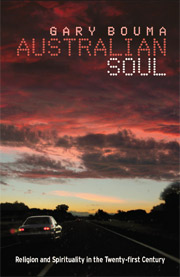Book contents
- Frontmatter
- Contents
- Tables and Figures
- Preface
- Acknowledgements
- 1 Introduction
- 2 Qualities of Australian religion and spirituality
- 3 Quantities of Australian religion and spirituality
- 4 Spirituality and cultural change
- 5 The changing social location of religion and spirituality
- 6 The mainstream: From Christendom to comfortable on the margins
- 7 Religion and spirituality respond to change
- 8 Religion, spirituality and Australian social policy
- 9 Signs of hope in the twenty-first century
- Further reading
- References
- Index
5 - The changing social location of religion and spirituality
Published online by Cambridge University Press: 05 June 2012
- Frontmatter
- Contents
- Tables and Figures
- Preface
- Acknowledgements
- 1 Introduction
- 2 Qualities of Australian religion and spirituality
- 3 Quantities of Australian religion and spirituality
- 4 Spirituality and cultural change
- 5 The changing social location of religion and spirituality
- 6 The mainstream: From Christendom to comfortable on the margins
- 7 Religion and spirituality respond to change
- 8 Religion, spirituality and Australian social policy
- 9 Signs of hope in the twenty-first century
- Further reading
- References
- Index
Summary
The place of religion in Australian society has changed dramatically since World War II. In 1947 religion and religiously organised spirituality could be said to have been central, vertically integrated and well articulated with the state. This social location continued through the 1950s and into the 1960s, but during the 1970s and increasingly into the 1990s, religion became distanced, marginalised, disengaged from the state and privatised. A key set of events marking this transition includes the role of the churches in opposing Australian involvement in the war in Vietnam, the sexual revolution and the introduction, first, of Saturday afternoon and Sunday trading and then 24/7 trading. While some analysts predicted with confidence the ultimate demise of religion (Gilbert 1980; Bruce 1996, 2003), that has in fact not been the case (Berger 1999; Davie 2002; Martin 2005). As the twenty-first century unfolds religion is clearly influential, and spirituality is seen to be uncontrolled and energetic (Thomas 2005; Appleby 2000). Religious groups find ways to influence social policy, involve a different set of players, are horizontally diffuse rather than vertically integrated and still perform public events, but they must share with groups once dismissed as irrelevant. The most spectacular event marking this transition was the destruction of the Twin Towers and the attack on the Pentagon on September 11, 2001 followed by the War on Terror and the Bali bombings.
- Type
- Chapter
- Information
- Australian SoulReligion and Spirituality in the 21st Century, pp. 106 - 128Publisher: Cambridge University PressPrint publication year: 2006



